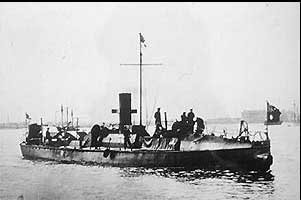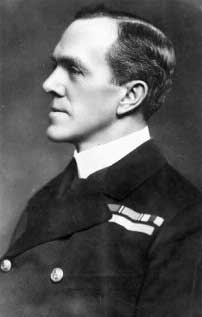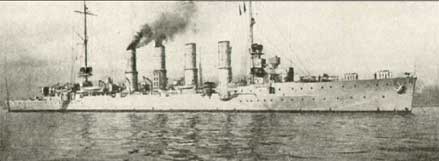|
Capture of the German Line Ship Hobart, at Port Phillip Heads on August 11th, 1914, plus the German Mercantile Signal Book.
Introduction. We recently went through them all to come up with four particular subjects:
August 11th. 1914. Captain J.T. Richardson RAN, the District Naval Officer Victoria in the torpedo boat Countess of Hopetoun, had arrived at the Inner Examination anchorage early that forenoon and then boarded the Examination vessel Alvina.
He ordered Midshipman Veale and his six RANR signalmen to change from their naval uniforms to dress in civilian clothes borrowed from the civilian Pilot crew. The German ship Hobart entered Port Phillip late in the afternoon to anchor off Observatory Point. She belonged to the German Line Deutsche-Australische Dampfschiffs Gesellschaft, Hamburg Formed in 1888 to operate services from Hamburg via Antwerp and the Cape to Adelaide, Melbourne and Sydney. The service commenced in July 1889, but within a couple of years, passenger services to Australia were discontinued and the company restricted it's activities to the cargo trade to Australia and the Dutch East Indies and latterly to North and South America. Taken over by the Hamburg America Line in 1926 and lost it's identity as a seperate concern.
The ship built in 1912 was 5,923 tons. Captain Richardson having donned a grey overcoat over his uniform and replaced his Naval cap with a civilian bowler hat, carrying a concealed but loaded pistol was rowed across to Hobart. Accompanied by Midshipman Veale, they boarded the German ship, He removed his bowler hat and overcoat, gave them to Veale, donned his Naval Cap, pointed his pistol at the Master of Hobart, informing him that he and his crew were to be interned, and his ship was a prize of war. Veale and his boat's crew returned to Alvina, and an armed guard of Reserve sailors were put aboard Hobart, and with Captain Richardson still on board the ship proceeded up Port Phillip Bay to anchor in Hobson's Bay. During the night of August 11/12. Richardson brandishing his pistol to cover the ship's Master, immediately took possession of the valuable signal book. It was subsequently translated by Doctor Wheatley, the Director Of Studies at the Royal Australian Naval College at Osborne House Geelong, and despatched by the fastest route to the Admiralty in London. Value of this Signal Book.
The victory over Von Spee's Squadron removed the menace of German surface ships from the world's oceans until their Armed Merchant Raiders became operative late in 1915, followed up with Germany's Unrestricted Submarine Warfare which began early in 1917. Capture of German Cruiser Madgeburg by the Russians.
Code books were seized and rushed off to London, and Admiralty experts found they matched the code book captured by Captain Richardson from Hobart on August 11/12 1914. Thus the Admiralty throughout the 1914-18 war were able to decode German signal traffic to give intelligence to Fleet C-in-C's in advance of German Naval Operations. Lack of Official recognition of Captain Richardson's initiative. There is some mention of this exploit in Admiral Sir William James biography The Eyes of The Navy about Admiral Reginald Hall, Director of Naval Intelligence at the Admiralty 1914-1918, at pages 29, 152 and 158. Lew Lind in his Historical Naval Events of Australia Day by Day, at pages 24, 25 and 26 records this important event. Conclusion. Captain Richardson RAN, deserves his place in the annals of the Royal Australian Navy. |




